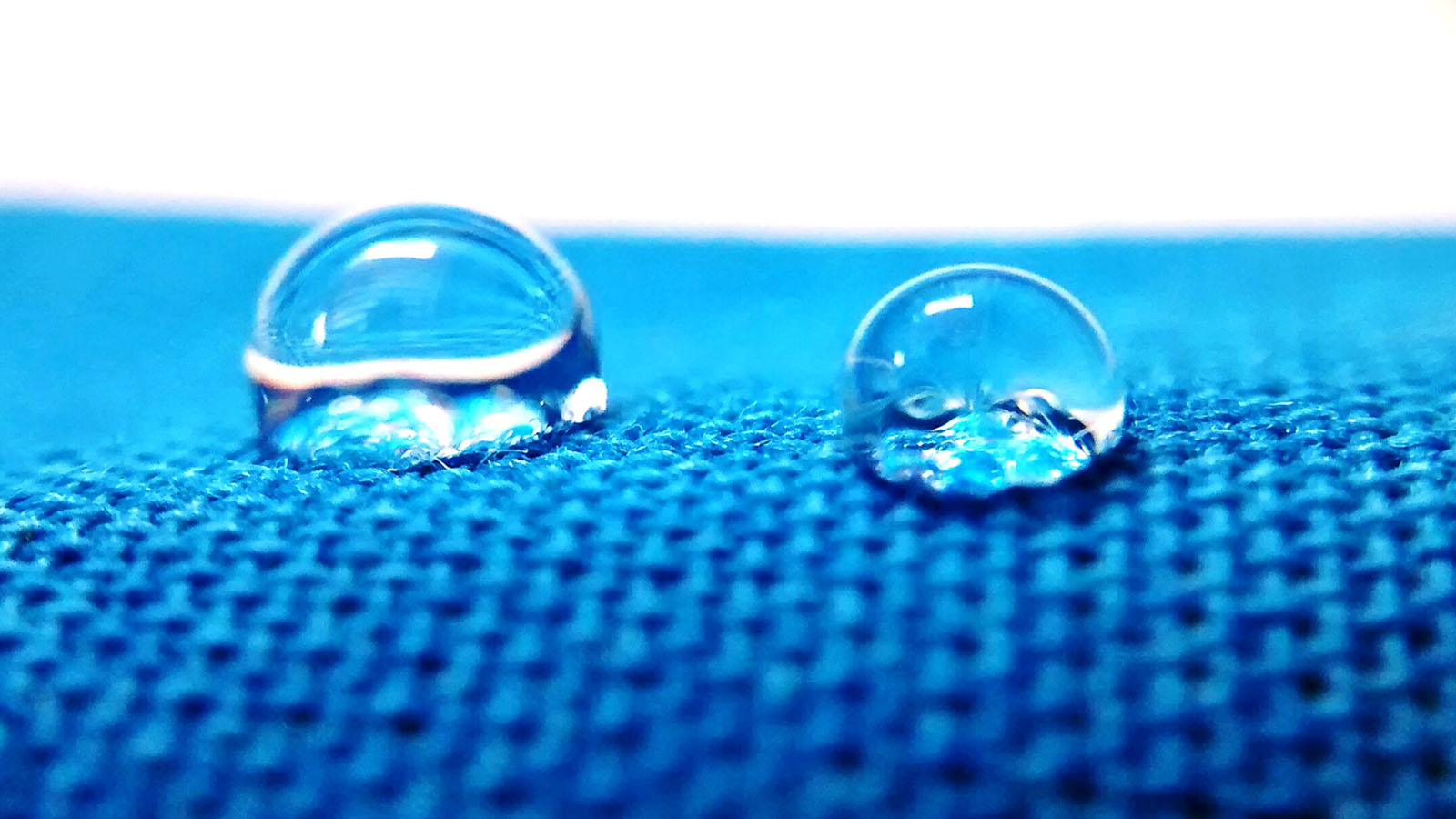Hydrophobic Coating vs Oleophobic Coating for Car in US: What is surface modification (hydro / oleo - phobic / philic)?
21 October 2015
Surface modification (hydro / oleo – phobic / philic) is the act of modifying the surface of a material by bringing physical, chemical or biological characteristics different from the ones originally found on the surface of a material.
Hydrophobic effect
The term hydrophobic means water (hydro) fearing (phobic). In chemistry, hydrophobicity is the physical property of a molecule known as a hydrophobe that is repelled from a mass of water. This is purely due to the absense of attraction without involving any repulsive force. Hydrophobic effects can be achieved by the application of alkylsilanes on a wide range of mineral substrates:
- Porous surfaces, such as concrete, natural stone to create water repellency
- Mineral fillers and pigments to improve dispersibility and compatibility in organic polymers
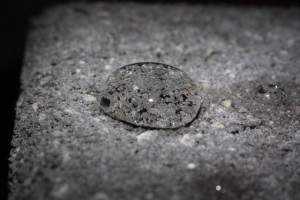
Oleophobic effect
The term oleophobic means oil (oleo) fearing (phobic) which also sometimes called lipophobia. It is a chemical property of chemical compounds which means “fat rejection”, literally “fear of fat”. Oleophobic or lipophobic compounds are those not soluble in lipids or other non-polar solvents. From the other point of view, they do not absorb fats. Oleophobic effects can be achieved by the application of fluoroalkylsilanes on a wide range of substrates.
- Smooth surfaces, such as glass and ceramic to create durable anti-stick and easy-to-clean properties
- Porous surfaces, such as concrete, natural stone to create easy-to-clean and anti-graffiti properties
- Cellulose materials, such as wood to achieve long lasting water and oil repellence

Hydrophilic effect
The term hydrophillic means water (hydro) loving (phillic). Hydrophilic substances (ex: salts) can seem to attract water out of the air. Sugar is also hydrophilic, and like salt is sometimes used to draw water out of foods. Hydrophilic effects on mineral materials can be achieved by the use of silanes containing hydrophilic functionalities, such as amino, polyethylene oxide, and epoxy. These properties improve dispersibility in polar solvents, water, and polar polymers and allow higher filler loadings.
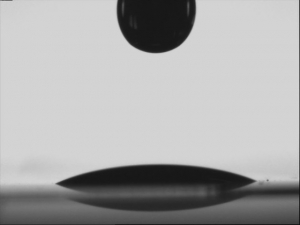
Organophilic effect
Organophillic basically means a chemical or molecular orientation favoring the attraction of hydrocarbons or materials which are miscible in hydrocarbons. Organophilic materials are characterized by weak dipole moments. They are basically immiscible in water. Organophilic effect on inorganic materials can be achieved by using a number of organofunctional silanes.
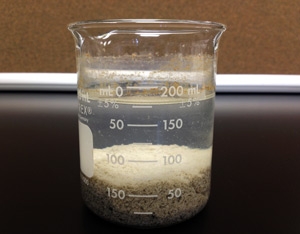
Hydrophobic Coating vs Oleophobic Coating for Cars: What’s the Difference?
When it comes to keeping your car looking spotless, hydrophobic and oleophobic coatings are game-changers. Here’s how these surface modifications work, and why they matter.
1. Hydrophobic Coatings: The Power of Water Repellency
Think of hydrophobic coatings as your car’s invisible raincoat. “Hydro” means water, and “phobic” means fearing, so hydrophobic surfaces repel water. In practice, applying hydrophobic coatings (like alkylsilanes) on surfaces such as concrete or even your car’s paint creates a barrier where water beads up and rolls off instead of sticking around. This can prevent water stains, reduce the chance of corrosion, and make washing your car easier.
2. Oleophobic Coatings: Resistance to Oil and Stains
For surfaces prone to oil and grime, an oleophobic coating is invaluable. “Oleo” stands for oil, so oleophobic surfaces resist greasy substances and smudges. This type of coating, often made from fluoroalkylsilanes, is commonly applied to smooth surfaces like glass or ceramic to make them anti-stick and easy-to-clean. On car windshields and interiors, an oleophobic layer can prevent fingerprints, oil smudges, and make spills wipe away effortlessly.
3. Hydrophilic Coatings: Attracting and Absorbing Water
Hydrophilic surfaces do the opposite of hydrophobic ones—they attract water. “Philic” means loving, so these coatings create a layer that spreads water evenly instead of repelling it. This is great for applications like improving visibility in rain by spreading water out to prevent beading. You’ll often see hydrophilic materials in environments where water dispersibility is essential.
4. Organophilic Coatings: Favoring Hydrocarbons
Organophilic coatings are more specialized, catering to surfaces that attract oils and hydrocarbons rather than water. This effect is useful in industries dealing with hydrocarbons or oily environments, although it’s less common in everyday automotive applications.
Which Ceramic Coating is Best for Your Car?
For most car owners in the US, a hydrophobic and oleophobic combination is ideal. This dual-action protection resists both water and oils, keeping surfaces free of water spots, smudges, and grime. It’s especially effective on paint, glass, and interior surfaces, making cleaning and maintenance easier and less frequent.
Top IGL Coatings for Oil Repellency: Maximize Your Car’s Protection with Hydrophobic + Oleophobic Ceramic Coating
IGL Coatings offers several oleophobic products designed to repel oils and provide easy-to-clean surfaces. Here are a few notable options:
- Ecocoat Premier: This coating is designed for both hydrophobic and oleophobic protection, making it ideal for automotive surfaces where you want water and oils to bead up and roll off. It’s a VOC-free, water-based coating that offers long-lasting gloss retention and resistance to environmental factors.
- Ecocoat EZ: This graphene-infused coating also provides hydrophobic and oleophobic properties. It’s particularly well-suited for quick applications and offers resistance to water spots, making it an efficient choice for car owners looking for durable and easy-maintenance protection on paint and glass surfaces.
- Ecocoat Leather: Specifically formulated for leather and vinyl surfaces, Ecocoat Leather is an oleophobic coating that protects against stains from oils and other contaminants, which is especially useful for maintaining clean and protected interiors in vehicles.
Each of these products provides a different application for maintaining and protecting surfaces, whether for exterior paint or interior upholstery.
Choose IGL Coatings Advanced Automotive Care Formulas: Best in US
IGL Coatings, a pioneer in sustainable and high-performance coatings, continues to set the standard in the US industry. Their latest offerings, such as the Ecocoat Elixir and Ecocoat EZ, showcase their commitment to innovation and environmental responsibility.
Ecocoat Kenzo Graphene, our signature graphene-reinforced coating, offers unparalleled durability and shine. Tested by TUV Rheinland and recognized as a leader in the industry, Ecocoat Kenzo provides a warm glow and exceptional protection, making it the ultimate choice for those seeking the best in ceramic coating technology (SEMA Show).
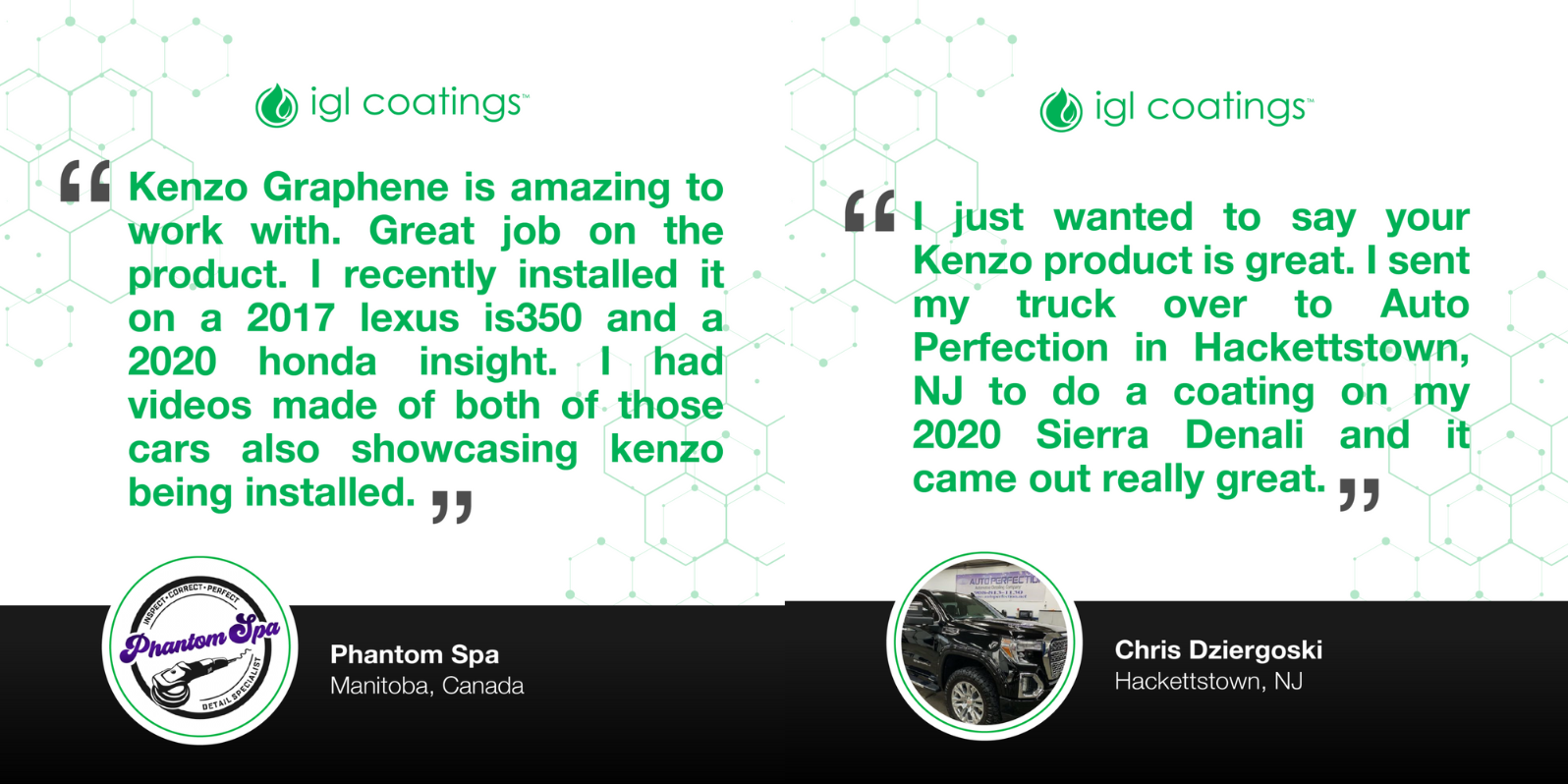
Ecocoat Elixir provides excellent water spot resistance, improved hydrophobic properties, and enhanced slickness, making it a top choice for both professional detailers and DIY enthusiasts. With a reduced curing time of just two hours, it’s perfect for those who need quick yet effective results.
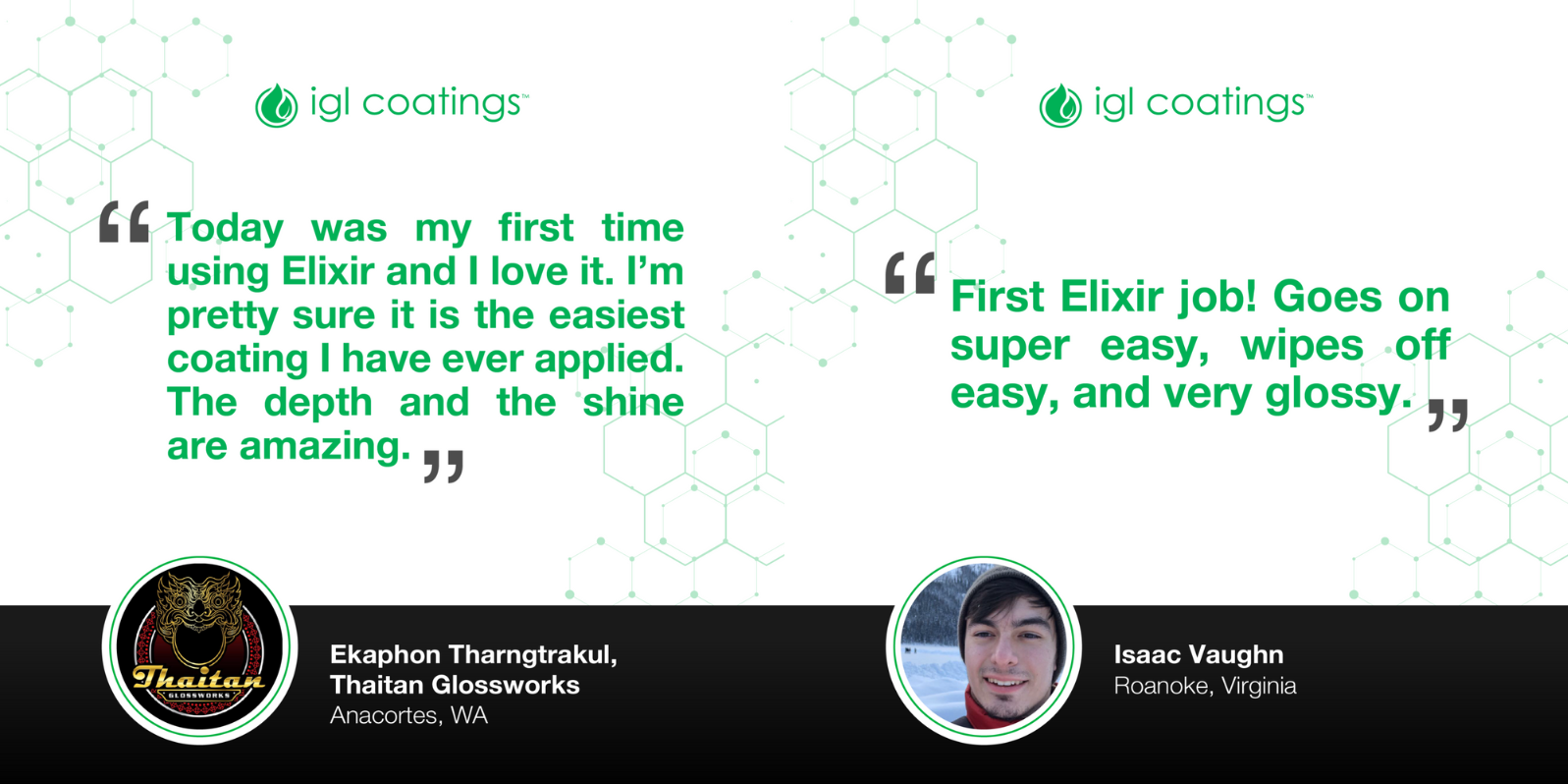
Ecocoat EZ is designed for easy application, making it ideal for beginners. This one-layer, all-surface coating offers up to a year of durability, combining ease of use with outstanding protection and shine.
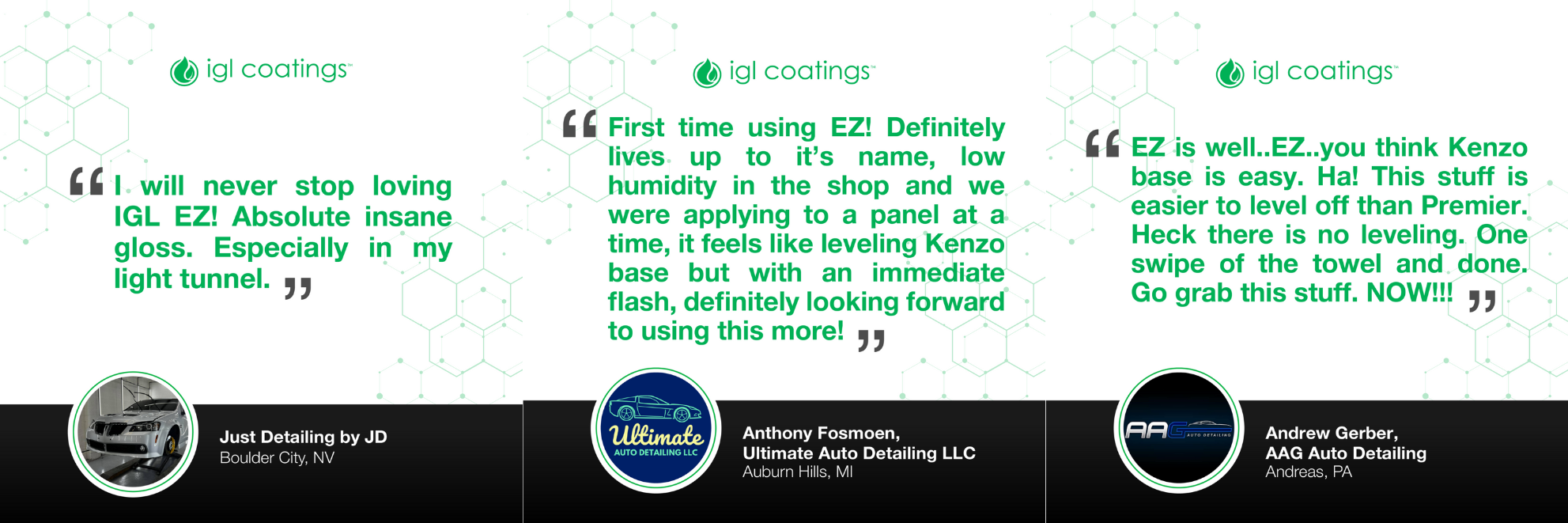
For more information about IGL Coatings and to explore their full range of products, visit IGL Coatings and join the community of automotive enthusiasts dedicated to achieving unparalleled shine and protection.
About IGL Coatings
IGL Coatings has rapidly ascended to become a leading name in the car automotive detailing industry in US since our establishment in 2015. Originating from Malaysia, we have achieved international acclaim for our innovative surface protection solutions, which emphasize sustainability and advanced technology. IGL Coatings is renowned for our commitment to research and development, creating high-performance coatings that offer exceptional durability and enhanced aesthetics.
Our global reach extends to over 50 countries, where we support a network of more than 5,000 micro-entrepreneurs. This global presence is bolstered by strategic partnerships and a robust distribution network, which has facilitated our recognition as the highest growth manufacturer in Malaysia and one of the top 500 high-growth companies in the Asia Pacific.
IGL Coatings: Industry Recognition
Our dedication to quality and innovation has also been recognized through various awards, including the prestigious SEMA Media Award and the International Detailing Association’s Detail Supplier of the Year award.
These accolades reflect our commitment to excellence and our role as a leader in the industry. Our continuous innovation and adherence to high standards have made us a trusted name among professionals and enthusiasts worldwide.
Final Thoughts
Investing in ceramic coating for your EV is a smart decision that will not only protect your valuable investment but also enhance its appearance and longevity. With its superior protection, hydrophobic properties, and easy maintenance, ceramic coating offers unmatched benefits that will keep your EV looking pristine for years to come. Whether you choose to apply it yourself or seek professional assistance, the results will undoubtedly impress both you and others on the road.
So, give your electric vehicle the gift of ceramic coating and enjoy a flawless ride!
By incorporating these advanced protective measures, you can ensure that your EV remains in top condition, providing you with a beautiful and reliable vehicle for many years. If you have any questions or need further information on ceramic coatings, feel free to reach out to us or leave a comment below!
Follow us on social media:
Facebook | LinkedIn | Instagram | Twitter | YouTube | TikTok

